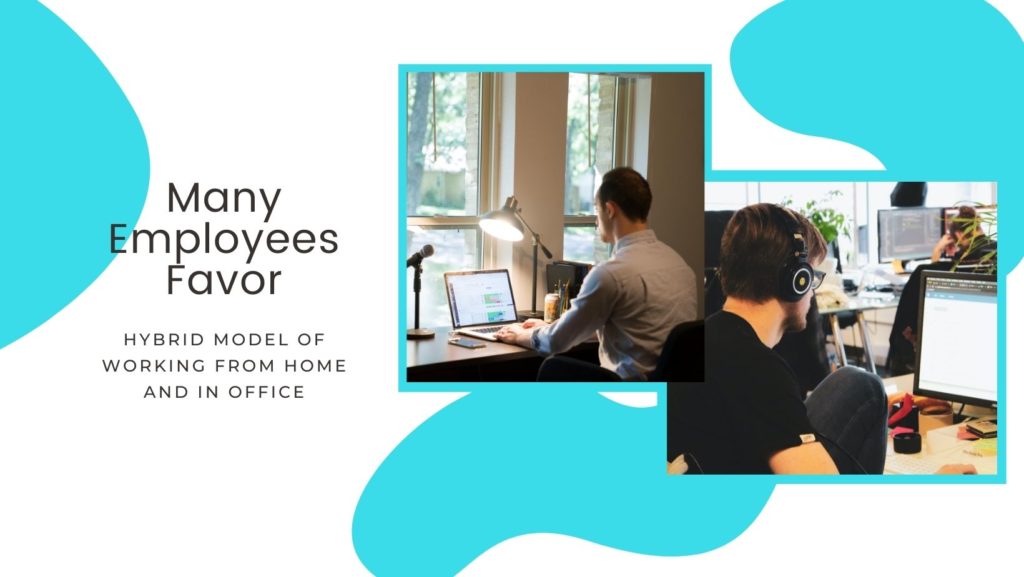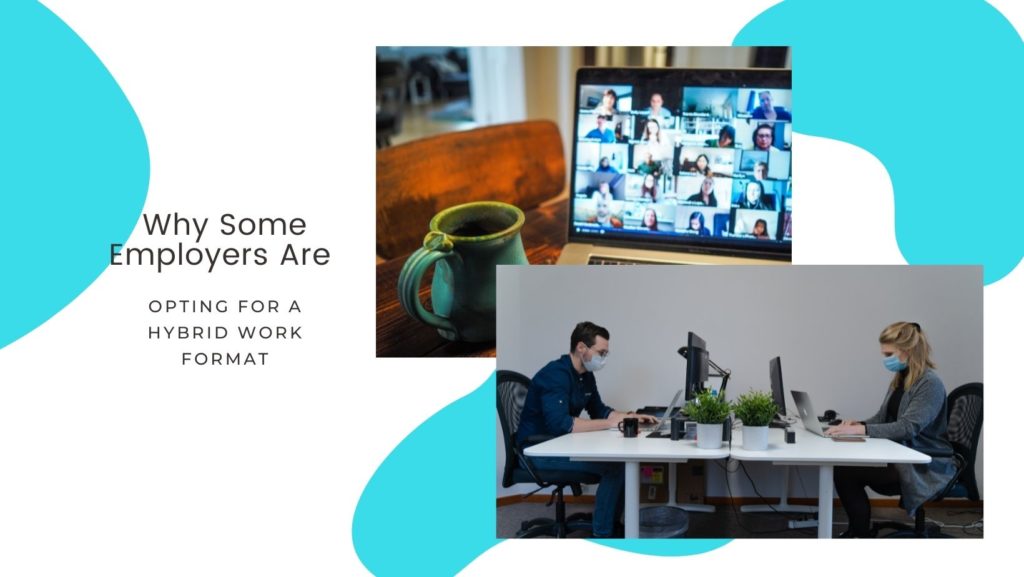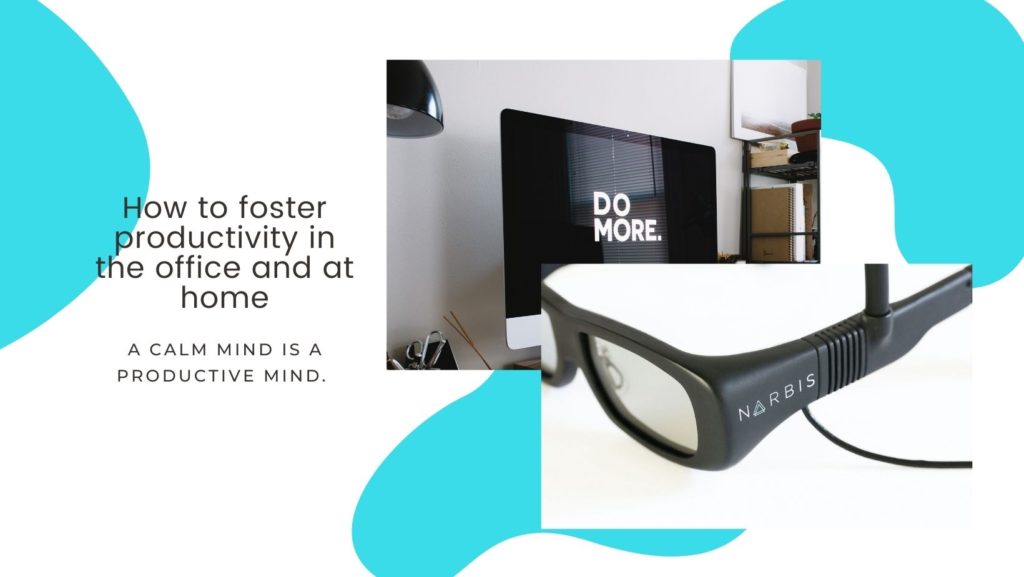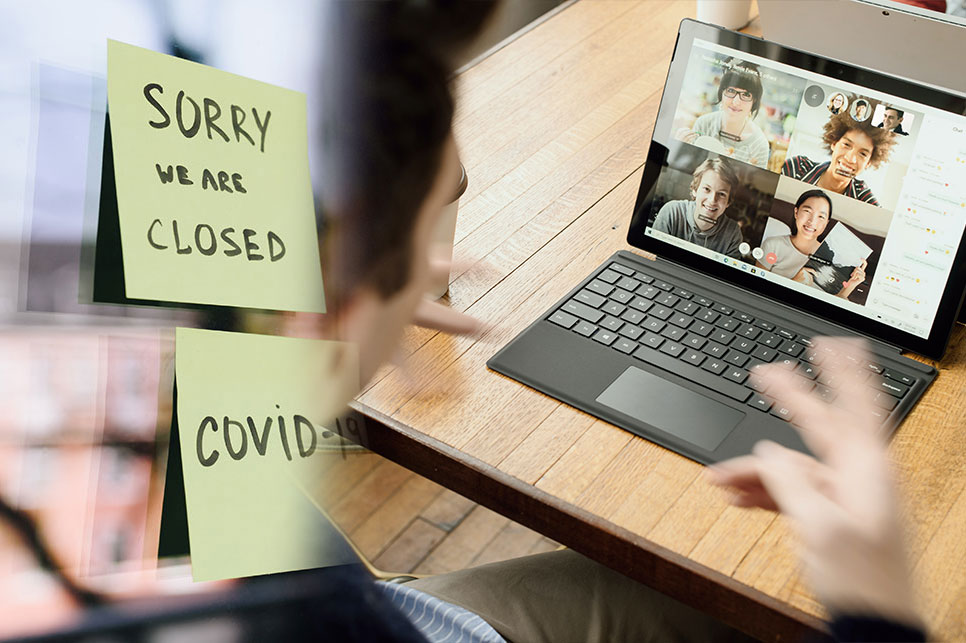For you, the employee, the past 16 months may have been an unintentional respite. Free from your open-plan office and all of its inherent distractions — whether it’s your coworkers’ cell phone pacing or your bosses’ thrice-hourly “quick chats” right as you were getting into your creative flow state — working from home has been a wellspring of productivity. Rather than getting stressed over a commute, you can start your morning with a yoga or mindfulness practice before settling into your workday routine. Moreover, for neurodiverse people, it can be beneficial not to have to expend energy navigating office politics and decoding their coworkers’ expressions and tone.
On the flip side, however, elements of workplace culture can fall by the wayside during a completely remote workplace environment. Slack and Microsoft Teams messages can lack nuance. It can be difficult to mentor junior employees over the phone and on Zoom. On that note, teleconferencing calls are another source of telecommuting stress: Not only does it offer the constant fear of technical error, the always-on-camera setting can make employees paranoid about their appearance on screen and the state of their home, as well as whether or not to engage in behavior as mundane as scratching one’s nose.
Now that COVID-19 vaccinations are plentiful and easily accessible in the US, many employers are requiring their teams to be back into the office. Goldman Sachs returned to its lower Manhattan offices this month, to great fanfare; J.P. Morgan has told employees to prepare to return starting in July.
At the same time, other companies are in no great rush to return. Citigroup has announced a hybrid work policy, while other financial institutions are aiming for Labor Day as a target for returning to work, giving HR departments a bit more wiggle room to figure out plans and parents a chance to spend time with their school-age children over summer vacation.
On that note, parents — especially women — might feel particular trepidation over returning to the office full-time. On one hand, hybrid and remote work affords work-life balance. On the other, the lack of in-person face time might put working parents at a further disadvantage when it comes to promotions. Indeed, as a Stanford professor was quoted as saying in The Atlantic, “Ground zero for who stands to benefit from WFH in the near future is something like a 45-year-old software engineer who used to work in central Manhattan but now they can do the same work, for the same salary, from their living room in the suburbs.”
We spoke with employees and employers about their feelings about remote vs. in-person work. How has their productivity been affected? Can managers still manage? Do employees fear micromanagement more when remote working or in person?
Out of the answers received to our open call for these questions, none of the individual employees advocated a full-time return to the office. Perhaps as intriguing, if not more so, was that none of the individual employees polled were pulling for a completely remote work schedule but rather would like to see a hybrid model. For their part, employers were across the board; with workplaces aiming for a hybrid workplace format for at least the early months. See our respondents’ varied reasons below:
Many Employees Favor Hybrid Model of Working from Home and in Office

For many employees, a hybrid work schedule offers work-life balance with the collegiality of an in-person office:
After more than a year of working at home, it feels like everyone wants employees back in the office. My management team, our employees — even high-up CEOs and corporate executives — all want the workplace to be open again. It’s rare that everyone is in such agreement: Everyone is tired of being at home.
There is an adjustment period that needs to take place as offices open back up again. Many people are not used to being so close to others, nor are they comfortable following a 9-5 schedule. This has led me to believe that a hybrid work method is probably best for most offices. Over time, the hybrid model might fade away and we may allow all employees to be at the office full-time. But, for the time being, a bit of both worlds is the best approach because it makes everyone more comfortable — and more productive. The anxiety, stress, confusion, and high emotions of returning into the normal workplace are gone with the hybrid model. It just makes sense for everyone across the board.
— Eric Florence, cybersecurity analyst, SecurityTech
As an employee, I prefer working in a hybrid setting. Preferably, one in which I can decide which day I can go to the office or not. This is because there are some days where I couldn’t focus at home and in an office setting I can mingle with other people aside from my family. I also find a change in scenery highly beneficial for my productivity. We mostly use Slack and it doesn’t really bother me at all. In fact, I have the messaging app closed most of the time.
Yes, we do have a senior manager that insists on returning to the office full time. I find it really vexing as the productivity level of our teams hasn’t reduced one bit and it even increased by a notch when we were all working from home.
— Heather Reid, resource manager, Ukulele Tabs
Why Employers/Management Value in-Person Offices: the Intangibles of Face-to-Face Communication

Many employers feel something gets lost when team members are holed away from the action:
Most of the higher-level managers are interested in seeing everyone going back to the office. Even so, most of the employees have adapted very well to the work from home modality. Perhaps the comeback to the office isn’t going to be right away. A plan will be implemented to integrate workers into groups. We will also evaluate which ones are more convenient to be integrated immediately and which ones will continue working from home.
The possibility of being a hybrid office has not been closed, however, it is an idea that has not yet been finalized in the plans of the managers with higher positions. Although it has been an excellent option for this emergency, it is still not a convenient method for the company. Although we are seeing the light at the end of the tunnel with the pandemic, there are still many problems to be solved. And getting people back to work is one of the main concerns of many companies today.
— Sharon van Donkelaar, chief marketing officer, Expandi
Our technical employees have been working in our small factory as needed during the pandemic and truly miss working five days a week. They can’t do what is required at home and enjoy the challenge and sometimes innovation in meeting technical demands in the work environment. They sometimes answer tech questions from home, but that is limited.
Our office staff, on the other hand, seem to enjoy working from home as much as possible. They seem to prefer a hybrid situation in which they can work from the office for three days a week and two from home. We are undecided as to whether we will allow that status to continue, but seem to be leaning more to going back to the traditional office. One reason is that the communication between technical and office people is important and we have not found that it works well when office staff are not present to offer assistance and sometimes direction to the technical staff.
— Barry Levine, founder and CEO, Sperry West
Expectation management is the key to a successful and productive transition back to the office. When expectations are clearly defined and met, trust is either maintained or regained if trust has already been lost. When leaders fail to meet expectations, trust will fall and dysfunction will likely rise. Whatever an organization’s plans are for the return of their workforce to physical office spaces, clear, frequent communication about what employees can expect — and what is expected of them — will support a smoother return and make them more productive.
— Fred Garcia, president, The Logos Consulting Group
Arguments for Maintaining Remote Work Post-Pandemic

Other companies have found that remote work has allowed their employees’ productivity and morale to flourish:
After 15 months of working from home my sense of employee productivity and happiness remains positive. We’ve checked in repeatedly with staff to see how they feel about working from home. While there have been some difficulties, by now everyone has their own best practices. Some need flexible schedules, others prefer coworking spaces or “work-from-anywhere'” to work-from-home. The productivity gains we’ve seen are real and we’re eager to keep that up as we move into the new normal.
—Reuben Yonatan, founder and CEO, GetVoIP
Instead of generalizing, I look at my employees as individuals. Each individual has taken to remote work differently. For many, remote work has improved their happiness and productivity, while others can’t wait to return to our offices. While hybrid work decisions will have to be made based on teams, not individuals, I do think it’s important to keep individual behaviors in mind as we move forward in this transition. Teams that have largely thrived during remote work should have the option to stay remote. Teams that want to return should have that option as well. At the end of the day, what matters the most is my employees’ well-being.
—Vincent Bradley, co-founder and CEO, Proper Wild
The consensus is unequivocally in favor of working remotely or in a hybrid capacity. My team members and employees from other teams have continuously echoed this sentiment throughout the pandemic. Our leadership team has also found that employees have been more productive and less stressed, as a result.
Most employees that I have spoken to would be open to returning to the office periodically, however, they are all cheerleaders of the work-from-home model.
We’ve downsized our office space, and converted existing desks into remote work stations that anyone can connect to if they decide to spend some time working from the office. As of now, there’s no plan to move back to an in-office-primary model, and it’s unlikely that this will change.
— Datis Mohsenipour, director of marketing, Outback Team Building & Training
Why Some Employers Are Opting for a Hybrid Work Format

Many companies value facetime and the intangibles that come from in-person interaction while acknowledging their employees’ needs for work-life balance as well as re-adjustment to office life:
I do believe that it’s coming to the time that employees should start returning to the office again. With that being said, employers need to ease employees into the new workplace — whether you’re planning on running a hybrid model or not. Employees will no longer be used to working in the office. Suddenly going back to the way things were might cause a bit of a shock to the system. For this reason — and the fact that the pandemic still isn’t completely over — it’s a good idea to at least run a hybrid workplace in the beginning to get employees used to working in the office again. Your employees will need to get used to the new work style and you don’t want to push them too hard lest they become confused, lose motivation, or their productivity drops. It’s important just to be careful and take your employees’ needs into consideration throughout the adjustment period.
— Teri Shern, co-founder, Conex Boxes
As a manager for an e-commerce company, I’m getting my team ready to come back into the office. In this, I’m trying not to presume that I know what my team members are thinking. While the decision to return to in-person working has been made, how the transition rolls out is still being determined.
I’ve informed my team that we’ll be coming back in but I’ve also solicited their feedback on what their concerns are and what measures they’d like implemented to make them more comfortable. It seems like everybody is ready to come back in and start working face-to-face again but there is a little hesitancy in regards to safety and some people with family obligations are going to need a little extra time to make sure things will be okay at home. We’ll be operating in a hybrid environment while those who are ready come back first and the rest return as they get their family situations sorted. I’m thankful that we were able to keep things going by working from home but my team and I are all ready to get back to pre-pandemic ways.
— Todd Ramlin, manager, Cable Compare
Our headquarters are based in Barcelona with full-time employees and a large remote work base from all over the world. We will definitely be continuing with the hybrid work model. The plan is a three-day office, two-day home/work routine on a rotational basis.
We are basing this approach on feedback from our employees, who overwhelmingly support a balanced approach that takes into account their productivity drivers working remotely and other outcomes in which a synergetic in-person connection is needed. We have set up many new communication channels this past year to help strengthen and streamline our remote teams and will continue building on these best practices.
I think most of our staff is looking forward to the comradery and companionship of fellow employees with similar goals and being thankful for the decrease in those awkward Zoom meetings. That said, the flow of communication should be more efficient being in closer proximity as verbal cues and instructions can be relayed faster than a hundred messages, emails, video conferencing and time checks.
There is also the real possibility of a bit of social anxiety but employers can be empathetic to these concerns by ensuring that health and safety protocols are still observed.
— Robert Brandl, founder, Email Tool Tester
How to foster productivity in the office and at home
A calm mind is a productive mind.

No matter if your desk is in a skyscraper or in your basement, anyone can benefit from productivity tools to create a workspace that promotes health and mindfulness.







